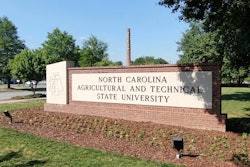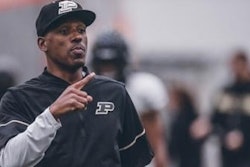Helping Foster Care Youth Access College
Education has not been on the radar for child agencies until
recently, say child advocates.
By Molly Nance
Aida Chávez was one of the thousands of foster youth who, when formally emancipated from the system at 18 years old, was not prepared. It was time to enter the real world: to get a job and go to college. But she had only $500 in her bank account.
“Had someone told me that’s not enough money to live sufficiently, I would have lied and said, ‘I have zero cents!’” says Chávez, recalling her dialogue with officials before she left the foster care system. “They never asked for a bank statement, and said ‘OK, she’s good to go.’”
Chávez, 25, says making it on her own wasn’t easy, but with help from friends, she did it. She made a life for herself, earned a bachelor’s degree in social work from California State University, Fresno in 2001, and is now a foster youth advocate.
Chávez and others, including Minh Ngo, have one goal in common: to improve the foster care system for children and prepare them for higher education. Ngo is the executive director of the Silicon Valley Children’s Fund, an organization that hosted the “Creating a Blueprint: Building Support for Students from Foster Care on Higher Education Campuses” conference in Santa Clara, Calif., in November.
The conference was the first of its kind and created a stir that concentrated on higher education as an imperative for a successful future for foster youth.
“Up until recently, education has not been something that was on the radar for child agencies. Their primary focus was protection and safety,” says Ngo, adding that the number of foster youth entering college is “dismal.” “It is almost negligible when you look at the overall population.”
According to a report from the U.S. Department of Health and Human Services, 513,000 children were in foster care in 2005, and 24,407 were formally emancipated. Blacks and Hispanics are disproportionately represented in foster care, accounting for 32 percent and 18 percent, respectively. Whites make up 41 percent, while American Indians make up 2 percent, Asians 1 percent, and 3 percent are multi-racial.
Ngo is helping to create policy change within California and introducing initiatives that will allow foster children to be college ready. She says it starts by first implementing a change in how elementary and high school records are transferred with the students, as many students change homes and schools up to five times a year. All of this movement results in a backlog of paperwork. Often the schools are misinformed of the child’s whereabouts; they flunk the student from the previous school, hindering the child’s educational progress.
“Finally, for the first time, we’ll have all the records pertaining to ‘Jane Doe’ in the same place,” says Ngo, referring to the JET initiative, a collaboration among the juvenile court, Department of Family and Children’s Services and school districts to streamline a database of foster youth information.
While foster care laws vary from state to state, in California, an initiative known as CC25I, or California Connected by 25 Initiative, is aimed at extending the emancipation age from foster care services to 25 years old.
Dr. Ruth Sherman, the director of Pathways to College Network, a national organization that assists underserved students, including foster youth, to obtain a higher education, says that is a critical step. She says that in this day and age, 18 years old is too young to expect a foster youth, or any person, to fend for him or herself.
“Maybe a generation or two ago, at 18 years of age, you could find a job that would give you a breadwinner’s wage, but today … blue-collar jobs are no longer available in any great numbers in this country, and therefore, all the children will need a college education,” Sherman says.
Higher education institutions are starting to take notice of former foster youth, too, following the advent of the Guardian Scholars, a national program that started in 1997. The program provides comprehensive services such as a support network and financial aid to meet the challenges former foster youth face.
Kizzy Lopez works at the Educational Opportunity Program at CSU Fresno, and is the coordinator for the Renaissance Scholar program, modeled after Guardian Scholars. Once a foster youth, she knows far too well the challenges her students face, from battling depression during the holiday season to having to study for their final exams while sleeping in their car.
“First, you need to understand who they are,” says Lopez. “If they are lucky enough to even get to college, it is difficult to find the resources to support them.”
She encourages her students to participate in the Independent Living Program, a voluntary program that directs transitional youth 15 ½ to 21 years old, to financial resources and educational and housing assistance. She hopes that partnerships will form with the ILP and college campuses nationwide, helping alumni excel in the real world.
© Copyright 2005 by DiverseEducation.com















